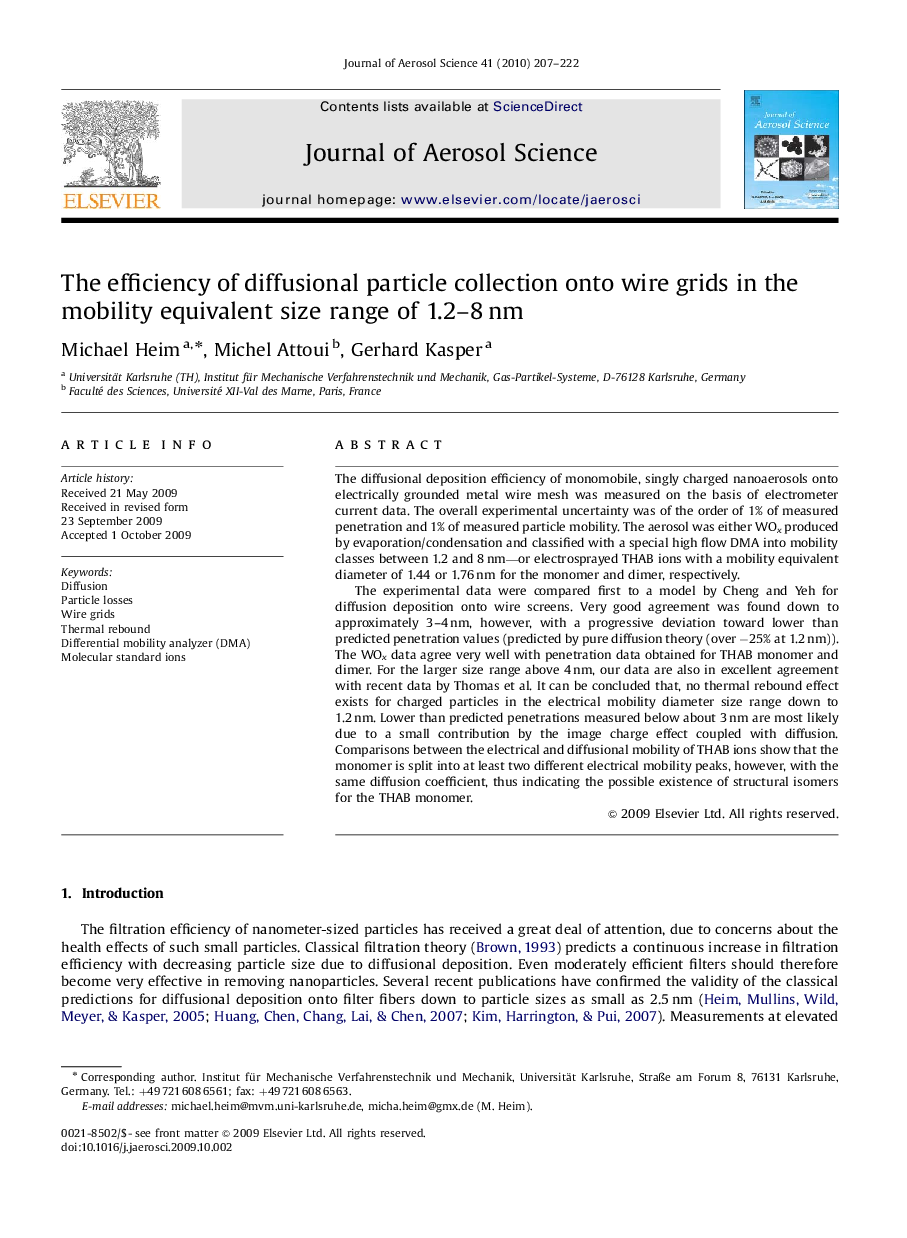| Article ID | Journal | Published Year | Pages | File Type |
|---|---|---|---|---|
| 4452866 | Journal of Aerosol Science | 2010 | 16 Pages |
The diffusional deposition efficiency of monomobile, singly charged nanoaerosols onto electrically grounded metal wire mesh was measured on the basis of electrometer current data. The overall experimental uncertainty was of the order of 1% of measured penetration and 1% of measured particle mobility. The aerosol was either WOx produced by evaporation/condensation and classified with a special high flow DMA into mobility classes between 1.2 and 8 nm—or electrosprayed THAB ions with a mobility equivalent diameter of 1.44 or 1.76 nm for the monomer and dimer, respectively.The experimental data were compared first to a model by Cheng and Yeh for diffusion deposition onto wire screens. Very good agreement was found down to approximately 3–4 nm, however, with a progressive deviation toward lower than predicted penetration values (predicted by pure diffusion theory (over −25% at 1.2 nm)). The WOx data agree very well with penetration data obtained for THAB monomer and dimer. For the larger size range above 4 nm, our data are also in excellent agreement with recent data by Thomas et al. It can be concluded that, no thermal rebound effect exists for charged particles in the electrical mobility diameter size range down to 1.2 nm. Lower than predicted penetrations measured below about 3 nm are most likely due to a small contribution by the image charge effect coupled with diffusion. Comparisons between the electrical and diffusional mobility of THAB ions show that the monomer is split into at least two different electrical mobility peaks, however, with the same diffusion coefficient, thus indicating the possible existence of structural isomers for the THAB monomer.
